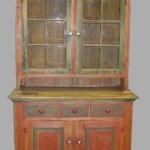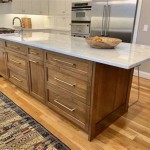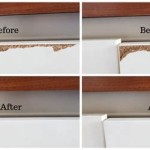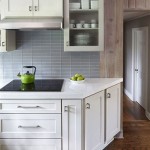What To Use To Clean White Painted Kitchen Cabinets
White painted kitchen cabinets offer a clean, bright, and timeless aesthetic to any kitchen design. Their reflective surface enhances the overall illumination of the space and provides a versatile backdrop for various decorative styles. However, maintaining the pristine appearance of white cabinets requires diligent cleaning practices. The porous nature of paint, coupled with the accumulation of grease, grime, food splatters, and fingerprints prevalent in a kitchen environment, can quickly tarnish their brilliance. Selecting the appropriate cleaning agents and employing effective techniques are crucial to preserving the beauty and longevity of white painted kitchen cabinets.
The choice of cleaning products is paramount in preventing damage to the painted surface. Harsh chemicals, abrasive scrubbers, and excessive moisture can lead to discoloration, peeling, scratching, and even warping. Before applying any cleaning solution to the entire surface, it is always advisable to test it on an inconspicuous area to assess its compatibility with the specific type of paint and finish. This precautionary step helps to avoid irreversible damage and ensures that the chosen cleaning method is safe and effective.
Gentle All-Purpose Cleaners
For routine cleaning and the removal of light stains, a mild, all-purpose cleaner diluted in warm water is often sufficient. The pH neutrality of these cleaners minimizes the risk of damaging the paint, while their gentle formulation effectively lifts away dirt and grime without leaving behind a residue. Look for cleaners specifically labeled as safe for painted surfaces, and avoid those containing strong solvents or abrasive particles.
To prepare the cleaning solution, add a small amount of the all-purpose cleaner to a bucket or bowl of warm water, following the manufacturer's instructions for dilution ratios. Using a soft, non-abrasive cloth or sponge, dampen it in the solution and wring out any excess water. Gently wipe down the cabinet surfaces, paying particular attention to areas that are prone to grease and splatters, such as around the stove and sink. Rinse the cloth or sponge frequently in clean water to avoid spreading the dirt around.
After wiping down the cabinets with the cleaning solution, rinse them with a clean, damp cloth to remove any remaining residue. Thoroughly drying the cabinets with a clean, dry cloth is essential to prevent water spots and potential damage from prolonged moisture exposure. This step helps to maintain the luster of the paint and ensures that the cabinets remain pristine and free from streaks.
Degreasers for Stubborn Grease and Grime
Kitchen cabinets, especially those near the cooking area, are susceptible to accumulating stubborn grease and grime. In such cases, a dedicated degreaser may be necessary to effectively break down these stubborn deposits. However, it is crucial to select a degreaser specifically formulated for painted surfaces and to use it sparingly to avoid damaging the paint.
When using a degreaser, it is important to follow the manufacturer's instructions carefully. Apply the degreaser to a soft cloth or sponge, rather than directly onto the cabinet surface. Gently rub the affected areas, allowing the degreaser to penetrate and loosen the grease and grime. Avoid excessive scrubbing, as this can damage the paint. Let the degreaser sit for a few minutes, following the recommended dwell time on the product label.
After the degreaser has had sufficient time to work, thoroughly rinse the cabinets with a clean, damp cloth to remove all traces of the cleaning agent. Multiple rinses may be necessary to ensure that no residue remains. Similar to the cleaning process with all-purpose cleaners, drying the cabinets with a clean, dry cloth is crucial to prevent water spots and ensure a streak-free finish.
Vinegar and Baking Soda Solutions
For those seeking natural cleaning alternatives, vinegar and baking soda offer effective solutions for cleaning white painted kitchen cabinets. Vinegar's acidity helps to dissolve grease and grime, while baking soda's mild abrasive properties can assist in removing stubborn stains. However, caution should be exercised when using these ingredients, as vinegar can potentially damage certain paint finishes if used undiluted, and baking soda's abrasiveness may scratch delicate surfaces.
To create a vinegar cleaning solution, mix equal parts white vinegar and warm water in a spray bottle or bucket. Lightly spray the solution onto the cabinet surfaces or apply it with a damp cloth. Allow the solution to sit for a few minutes to loosen the dirt and grime. Wipe down the cabinets with a clean, damp cloth, rinsing frequently to remove any residue. Dry the cabinets thoroughly with a clean, dry cloth.
For a baking soda paste, mix baking soda with a small amount of water to create a thick paste. Apply the paste to stubborn stains and gently rub in a circular motion with a soft cloth. Avoid excessive pressure, as this can scratch the paint. Rinse the area thoroughly with a clean, damp cloth and dry with a clean, dry cloth. Testing the baking soda paste on an inconspicuous area is particularly important before applying it to the entire surface.
Steam Cleaners
Steam cleaners offer a chemical-free cleaning method that can be effective for removing grease and grime from white painted kitchen cabinets. The hot steam loosens dirt and disinfects surfaces without the need for harsh chemicals. However, it is important to use a steam cleaner designed for delicate surfaces and to follow the manufacturer's instructions carefully to avoid damaging the paint.
When using a steam cleaner, start with the lowest steam setting and test it on an inconspicuous area to ensure that it does not damage the paint. Hold the steam cleaner nozzle a few inches away from the cabinet surface and move it slowly and steadily. Use a microfiber cloth to wipe away the loosened dirt and moisture immediately after steaming. Avoid prolonged exposure of the cabinets to steam, as excessive moisture can cause damage.
Ensure the kitchen is well-ventilated while using a steam cleaner. After steam cleaning, thoroughly dry the cabinets with a clean, dry cloth to prevent water spots and potential moisture damage. Steam cleaning may not be suitable for all types of painted cabinets, so it is essential to check the manufacturer's recommendations or consult with a professional before using this method.
Specific Stain Removal Techniques
Beyond general cleaning, specific stains may require targeted treatment. Coffee stains, food splatters, and crayon marks, for example, may necessitate the use of specialized stain removal techniques. The approach to removing these stains should be tailored to the nature of the stain and the type of paint finish.
For coffee or tea stains, a paste made from baking soda and water can be effective. Apply the paste to the stain, gently rub in a circular motion, and rinse thoroughly with a clean, damp cloth. For food splatters, a mild dish soap solution can often do the trick. Gently wipe the affected area with a soapy cloth, rinse with a damp cloth, and dry thoroughly. For crayon marks, a soft cloth dampened with WD-40 can help to dissolve the wax. However, it is crucial to test WD-40 on an inconspicuous area first, as it may discolor some paint finishes. Wipe away the WD-40 residue with a clean, damp cloth and dry thoroughly.
Always exercise caution when using any stain removal technique. Start with the gentlest method and gradually increase the intensity as needed. Avoid harsh chemicals or abrasive scrubbers that can damage the paint. Testing the stain removal method on an inconspicuous area is always recommended before applying it to the entire surface.
Preventative Measures
Maintaining the pristine condition of white painted kitchen cabinets extends beyond regular cleaning. Implementing preventative measures can significantly reduce the frequency and intensity of cleaning required. These measures focus on minimizing the accumulation of grease, grime, and splatters in the first place.
One effective preventative measure is to promptly wipe up spills and splatters as they occur. Addressing messes immediately prevents them from drying and becoming more difficult to remove later. Using a range hood while cooking can help to vent grease and steam away from the cabinets, reducing the amount of airborne contaminants that settle on the surfaces. Consider using placemats and coasters on countertops to protect them from stains and spills.
Regularly dusting the cabinets with a soft cloth or feather duster can prevent the buildup of dust and dirt. Waxing or polishing the cabinets with a product specifically designed for painted surfaces can create a protective barrier that repels dirt and moisture. Periodically inspecting the cabinets for signs of damage, such as chips or scratches, and addressing them promptly can prevent further deterioration.
By employing these cleaning techniques and preventative measures, keeping white painted kitchen cabinets looking their best is achievable. Choosing the right products and consistent maintenance are key to maintaining the aesthetic value and extending the lifespan of these popular kitchen features.

How To Clean Painted Kitchen Cabinets By Kayla Payne

How To Clean White Kitchen Cabinets 3 Best Ways Avoid Abbotts At Home

How To Clean White Kitchen Cabinets 3 Best Ways Avoid Abbotts At Home

3 Super Easy Ways To Clean White Kitchen Cabinets And Avoid

How To Clean Painted Cabinets New Life Painting

My Painted Cabinets Two Years Later The Good Bad Ugly

How To Clean And Take Care Of Your Painted Cabinets Cliqstudios

Painting Kitchen Cabinets Best Tips For A Factory Smooth Finish In My Own Style

Distressed Kitchen Cabinets How To Distress Your

How To Paint Kitchen Cabinets A Step By Guide Confessions Of Serial Do It Yourselfer
Related Posts








